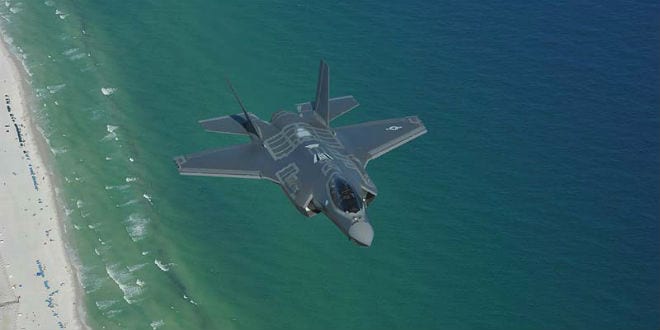On June 8, Israeli fighter jets flew across the country’s northern border for a highly unique air-raid deep inside Syria’s territory. The jets launched missiles at three targets near Damascus and Homs, killing seven soldiers. Among those killed was a colonel described by Syrian media as a “hero martyr” as well as an engineer who worked at a top-secret Syrian military lab.
The IDF, following standard procedure, refused to comment on the mission into Syria’s airspace. However, intelligence analysts in North America and Europe immediately noticed a distinction in the operation: That’s because up to that point, Israeli air-raids in Syria almost always targeted Iranian proxy forces as well as arms transport, the June 8 strike targeted Syrian military facilities — all with links to the country’s former chemical weapons program reports the Washington Post.
According to security officials who were briefed on the matter, the June 8 incursion was part of a larger campaign to stem what Israel believes was an attempt by Syria to restart the production of fatal nerve agents.
Israel ordered the strike, based on intel implying that the Syrian government was acquiring precursors for chemical weapons and other equipment needed to rebuild the chemical-weapons capability that it allegedly deferred eight years ago, according to four current and former U.S. and Western intelligence officials with access to sensitive intelligence during the time of the strikes. They discussed classified information and their understanding of Israeli deliberations.
The attacks reflected fears inside Israel’s intelligence agencies starting two years ago, after Syria’s military imported a key chemical that could be used to create deadly sarin nerve agent, the officials explained. The concerns increased as the intelligence officials observed activity at several sites that pointed to a rebuilding effort, the officials said.
Israeli officials neither confirmed the strikes nor did not elaborate on the reasons for them. At the time, the Syrian government repeatedly denied using or concocting, chemical weapons since 2013.
Syria’s ambassador to the UN Bassam Sabbagh, said in an address to the U.N. Security Council in October that Damascus “categorically condemned and rejected any use of chemical weapons under any circumstance, by whomever, whenever and wherever.”
The notion of a rebuilt chemical weapons program in Syria is considered to be a direct threat to Israel’s security. Syria, which once boasted a massive chemical arsenal, was initially meant for use in a future war against Israel.
“It is a strategic weapon for the regime,” said a Western intelligence official, breaking down the consensus among intelligence agencies that closely monitor Syria’s weapons procurement efforts.
The initial Israeli air-raid took place in March 2020, and targeted a villa as well as a compound southeast of Homs, the officials said. Homs is Syria’s third-biggest city and used to serve as a hub for Syria’s chemical-weapons production.
The hit on the villa was directly connected to Syria’s successful procurement the previous year of a massive amount of tricalcium phosphate, two Western intelligence officials said. The chemical, also known as TCP, has several civilian functions, such as a food additive. However, the substance can be easily converted into phosphorous trichloride, a precursor for sarin and other nerve gases.
The officials also stated that the Syrian army unit known as Branch 450, a division of Syria’s top military laboratory, the Scientific Studies and Research Center were the ones to receive the TCP. The SSRC managed the production of Syria’s chemical weapons from the 1980s until at least 2014. That was when the program was officially broken up under an agreement brokered by Washington and Moscow.
Intelligence data in the following months after the March 2020 strike led to locating other sites, and what Israel believed to be a continued effort to rebuild Syria’s chemical weapons capability, the two Western officials stated.
“There were more signs of them going back into production,” one of the officials explained.
The June 8 strike hit an army storage bunker near Nasiriyah, a village north of Damascus, as well as two other sites near Homs. Of the two, one was described as an auxiliary facility for the SSRC’s military laboratory in Masyaf, approximately 40 miles northwest of Homs.
According to Syrian media, seven military casualties from that strike, including Syrian colonel Ayham Ismail. The deceased officer was reportedly an army engineer assigned to the Masyaf complex.
If the strikes were fully successful in disrupting Syria’s chemical ambitions plans are yet to be known. Israeli officials meant for the strikes to be preemptive, eliminating Syria’s chemical production capabilities prior to the manufacturing of actual weapons.
The shortcode is missing a valid Donation Form ID attribute.




